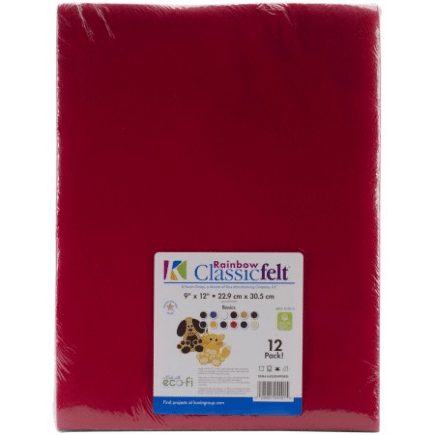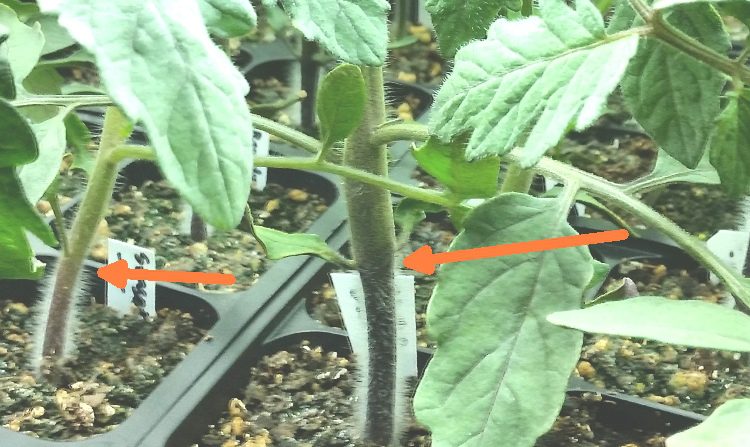After several years of sprouting season service, a seed tray wicking mat really starts looking sad. You remember that reusing things could lead to disease, so looking for a replacement becomes important. After all, not being able to remove ALL the old dried up roots hooked into the fabric covering might present unnecessary problems. But the cost of purchasing new capillary mat (a.k.a. wicking mat) material gives you sticker shock. Hmmm…
What else could you use? Surely there is a less expensive way to get the same result. This is the point I reached two years ago. And it wasn’t just reusing the two I had, seedling production was going through an expansion, and why would I want to pay for a complete seed starting kit when I would not be using the peat pucks, the undersized cells, or the flimsy riser platforms that collapse? It’s cheaper to buy these parts separately.
The Discovery Phase
 Google reveals that some people use old bath towels. Eww – can you spell mold and mildew? Others use an old wool sweater or blanket – none of those hanging around here. And finally, I discovered that some home gardeners use felt. That’s certainly inexpensive! A yard of craft felt, or a 12-pack of felt sheets is enough fabric to give you lots of seed tray wicking mat material. Enough for like 6-8 trays and it only costs $5 bucks… Awesome!
Google reveals that some people use old bath towels. Eww – can you spell mold and mildew? Others use an old wool sweater or blanket – none of those hanging around here. And finally, I discovered that some home gardeners use felt. That’s certainly inexpensive! A yard of craft felt, or a 12-pack of felt sheets is enough fabric to give you lots of seed tray wicking mat material. Enough for like 6-8 trays and it only costs $5 bucks… Awesome!
Recommendations are that it’s best to pre-wash to remove sizing. Give it a soak in a vinegar bath for 20 minutes to dissolve that, rinse well, and you’re good to go. It wicks nicely. No mold or mildew. The new seedlings look fantastic.
Until they don’t.
It’s almost an overnight change that starts about a month into the grow stage. One you can clearly see on the stem as the weeks go by. Like a line drawn in the sand, marking the point in time that your gorgeous new tomato and pepper plants went from incredible to suffering. And nothing you do to bring the nutrients back into balance alters what’s going on.

The Troubleshooting Phase
About the time the purple trunk line starts rising above the growth media the peppers and tomatoes develop yellowing or purpling leaves. This is a sign of a nutrient imbalance, which I must say is NOT always from your water. It wasn’t a case of poor potting mix (Ocean Forest and Happy Frog), or the fertilizers used. I’ve got two years of experience with this nutrient imbalance thing, this year being way worse than last.
 Helpful suggestions from the growing pros? “It’s your water.” But I’ve had the same well for 9 years, and been growing tomatoes and peppers from seed for the past 8 years, and until the past two seed starting sessions – I’ve never had nutrient imbalance problems before! Still, I followed the suggestion, investing a bunch of cash into distilled water, and correcting the pH to 6.5. I did that for 5 weeks, along with supplemental feedings of both phosphorus (for the purpling tomatoes) and magnesium (for the yellowing peppers) in the water tray, and directly into the cells as it persisted. It did not fix the problem.
Helpful suggestions from the growing pros? “It’s your water.” But I’ve had the same well for 9 years, and been growing tomatoes and peppers from seed for the past 8 years, and until the past two seed starting sessions – I’ve never had nutrient imbalance problems before! Still, I followed the suggestion, investing a bunch of cash into distilled water, and correcting the pH to 6.5. I did that for 5 weeks, along with supplemental feedings of both phosphorus (for the purpling tomatoes) and magnesium (for the yellowing peppers) in the water tray, and directly into the cells as it persisted. It did not fix the problem.
The plants were growing like crazy, but too fast, which was likely due to everything I was trying to get the deficiency to turn around. The flowers were forming fruits – way too early I might add. In 6 weeks from seed there were serrano peppers up to 2″ long were hanging from these plants?!! A tomato was also developing… and planting out was still weeks away.
It was crazy. I’ve had flowering in the seed trays, but never actual fruiting! Meanwhile, leaf discoloration kept worsening as days passed, until the old leaf fell off. Then the plant would quickly grow a new one to replace it that would just suffer the same result. The harder I tried to fix it mattered not. It was beyond fixing. But why?
Until I realized that the haphazard tray of lettuces, herbs, and what-have-you on the bottom rack not only had no signs of nutrient imbalance, I didn’t use seed tray wicking mat. I put them in 4 inch pots, which would easily fall off the riser platform when the rack is moved or the tray shifted, so bottom watering was wicked up directly out of the tray itself.
The Seed Tray Wicking Mat is Toxic?
Like what the hell is in felt? Peat pots may get slimy from continual bottom watering, but at least the plants are healthy! Initially, I suspected toxic dyes from China. Isn’t that where everything at WalMart comes from? As the days ticked by after realization set in, it became clear that whatever it was I certainly didn’t want to eat it! Never mind the cost of running that grow light for 2 months, or the amount of money invested in seed, fertilizers, potting mix, many gallons of distilled water… If you’re think it’s toxic, you don’t hesitate long before tossing it all in the trash.
I’d rather eat S.O.S. tomatoes and peppers than fruits grown on polluted plants. That is if they manage to produce a harvest. I will say that the tomatoes fared much better than the peppers last year, overcoming the nutrient issue once planted in the garden. Surprising, given the fact that there were other nutrient deficiencies taking place in the first straw bale garden experiment. BUT the felt used for seed tray wicking mat material last year was totally different from this year. And the relentless signs of nutrient imbalance were lighter, and reversed: I had purple pepper leaves, and yellow tomato leaves.
Both felts were made from synthetic fibers, but I bought yardage off the bolt in 2015, and this year, due to logistics, I used craft sheets sewn together. I don’t know where Jo Ann’s buys their felt from yet, but it was softer and more dense than what I used this year. According to felt manufacturer’s and professional crafter’s descriptions the softer fabric denotes real polyester, not pop bottle shards spun into fibers.
I do know now that what I bought at Wally World this winter was surprisingly made in the USA from recycled bottles by Kunin Group. They call it Eco Fi Felt, and it’s “protected by a safe and natural silver and copper agent to resist deterioration from mold, mildew, and odor.” Great for keeping craft projects in keepsake condition – but NOT for growing plants, let alone food plants. In fact, many synthetic fabrics are treated with antimicrobial applications made from silver or copper oxide, and in this case, a blend of both. It remains active in the fabric for up to 100 washes, though it’s effectiveness is eroded a bit in every washing and wearing.
How does having it in constantly saturated condition for 9 weeks measure up to 100 washes? With the potting mix and developing root mass sucking up everything that is liquefied no less. So, what happens when plants get an overdose of copper? What about the non-micronutrient element silver?
According to several studies on aquatic plants, excessive copper is damaging, even lethal, to plants – depending on the level of toxicity. Another study on the effects many heavy metal nanoparticles have in hydroponic nute solutions found that copper oxide was highly soluble, and silver oxide can also be taken up to a much lesser degree. Both of these metals had undesirable effects on the plants being grown.
To create a fabric treatment, the metal particles would have to be nanoparticle fine to be suspended smoothly in liquid for allover application, and reliable antimicrobial coverage. No, this isn’t a hydroponic grow, but once the roots outgrow the cell it might as well be. At that point they spread out over the wicking mat, weave into it if the material allows, and eventually find the water in the tray itself… absorbing everything in a take-up form as they go.
Copper & Silver are Heavy Metals
No vinegar rinse melts metal. They don’t use ‘sizing’ in felt creation, it’s stiff enough all on it’s own. Heat and ironing to finish the fabric is how manufacturers achieve the desired density and thickness of felts.
Heavy metals taken up by plants can masquerade as symptoms of other nutrient deficiencies. However, since those nutrients aren’t really deficient, just unavailable to the plant – there is no way of correcting your imbalance. Once absorbed by the plant, the heavy metals remain in it’s cells, proliferating into the fruits it bears. The same heavy metal causes different reactions in different types of plants, inhibiting or locking out a different nutrient or micronutrient while increasing uptake of another in each studied!
The imbalance was less severe last year. It was troublesome, rather than unsettling. As many a gardener, I just hoped that once in the ground they would repair and provide a harvest. The tomatoes came around, the peppers did not. Thankfully, most of the peppers harvested actually came off plants that were purchased elsewhere to replace those lost to high winds the week after planting out.
So glad I threw them out based on suspicion! I don’t know what’s worse to consume – toxic dyes, flame retardants, or heavy metals. As I started this research, it occurred to me that a flame retardant very well might be involved. Can’t find one reference that manufacturers who make polyester or recycled polyester (polypropylene) felt treat it to resist fire. Probably not the safest thing to wear. Definitely unsafe as a seed tray wicking mat – unless – you can find some 100% wool felt, which costs quite a bit more. If that’s no problem, then you might as well buy professional capillary mat material. That’s the safe approach, saving you from being forced to grow whatever tomatoes and peppers your local greenhouse has to offer.
More Info:
I’m new to using seedling mats. I have the tray, the styrofoam, the cloth mats and the divider form . What is the layer recipe for these trays? I mean, Does it go: water, styro, mats, dirt on top of mats and then the seed divider device? Do I really need the styrofoam? I’m just not sure of the exact layering recipe. Please help?
Material Matters: Seed Tray Wicking Mat
This is a very informational article, but what kind of wicking fabric can be used insteda of the expensive wick mats from garden supply